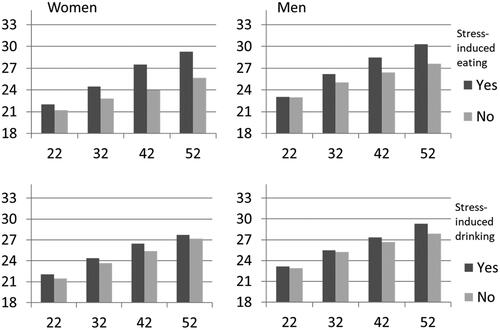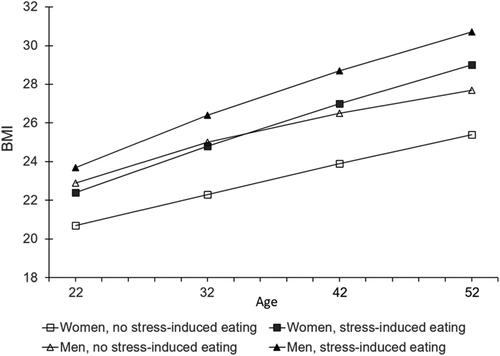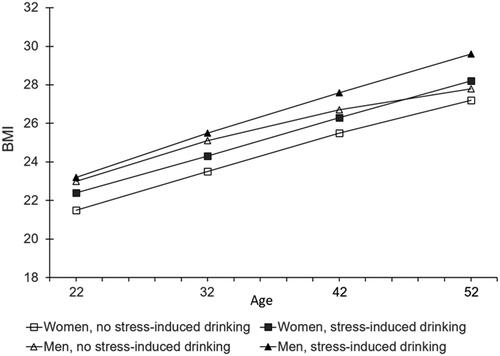Figures & data
Table 1. Distributions of study variables.
Figure 1. BMI means by use of stress-induced eating and drinking among women and men at different ages.

Table 2. BMI at ages 22, 32, 42 and 52 by stress-induced eating and stress-induced drinking among women and men. Linear Regression.
Figure 2. BMI trajectories predicted by number of follow-ups (0–4) in which stress-induced eating was reported. No stress-induced eating = stress-induced eating reported in none of the follow-ups; stress-induced eating = stress-induced eating reported in three of the follow-ups.

Figure 3. BMI trajectories predicted by the number of follow-ups (0–4) in which stress-induced drinking was reported. No stress-induced drinking = stress-induced drinking was reported in none of the follow-ups; stress-induced drinking = stress-induced drinking was reported in three of the follow-ups.

Table 3. Latent growth factors of BMI trajectories (age 22–52) predicted by number of follow-ups (0–4) in which stress-induced eating or drinking was reported in Latent Growth Models.
